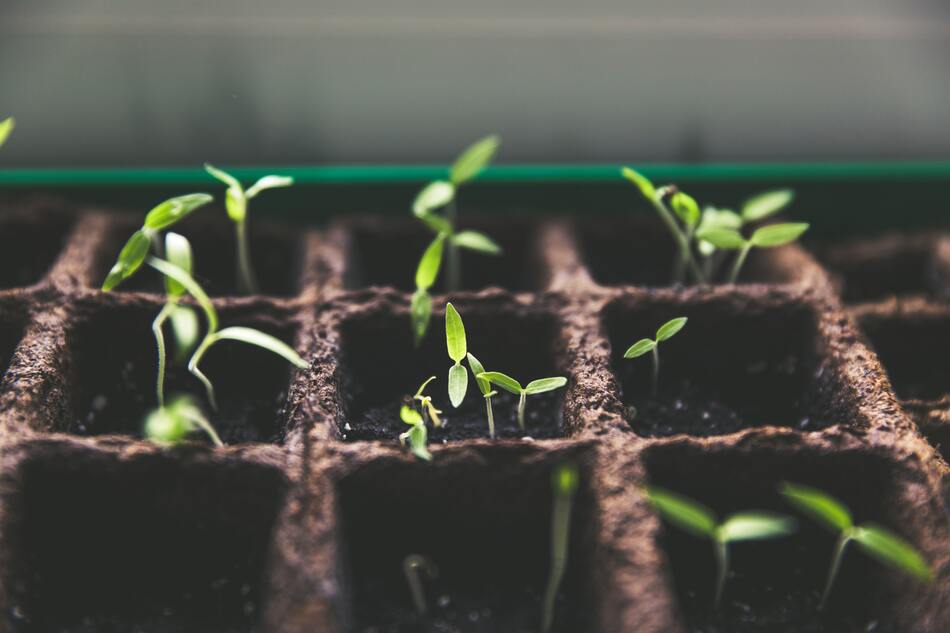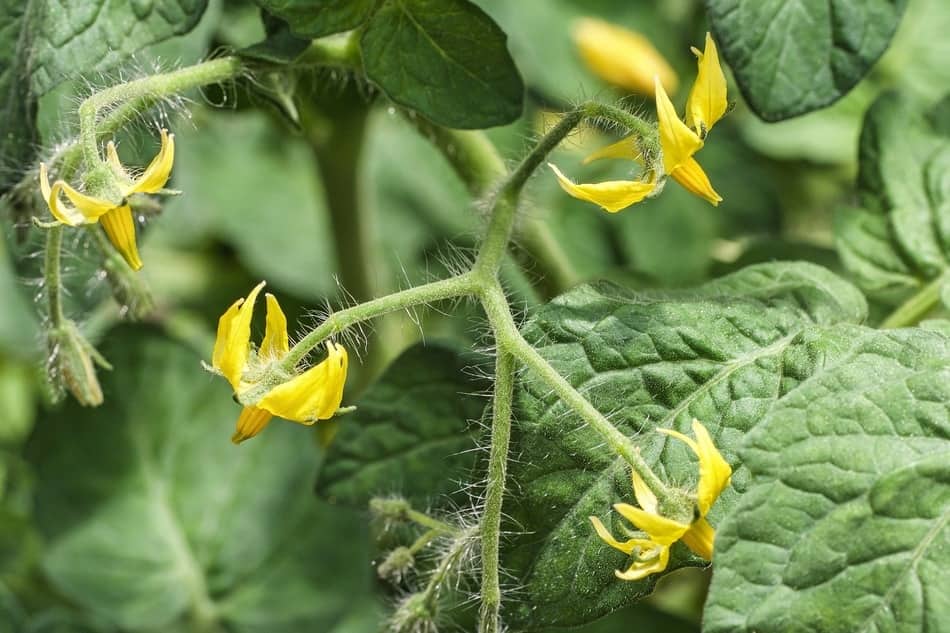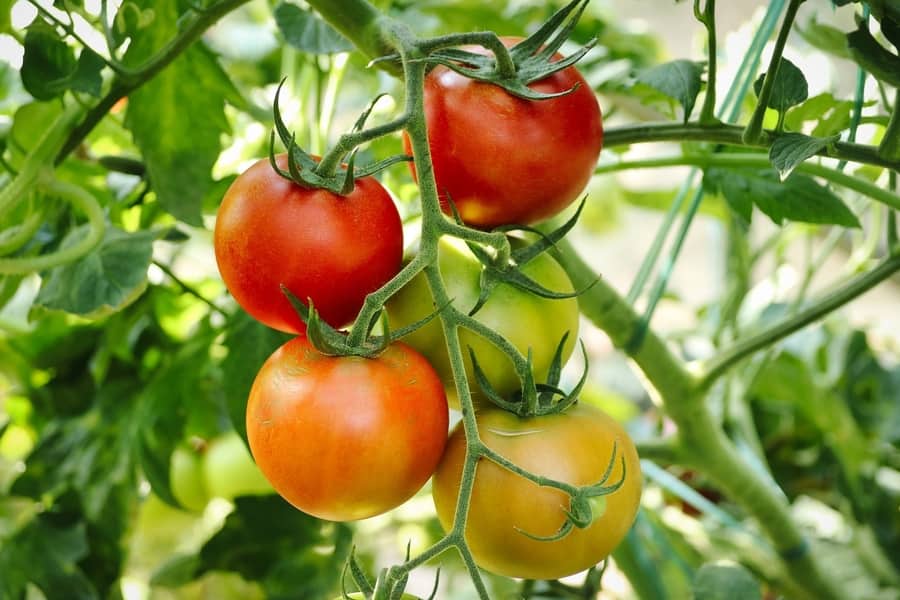Understanding the amount of water and the frequency a crop need is essential for good development. We must bear in mind that tomatoes are susceptible to the soil’s lack and excess moisture. In this blog, we will discuss tomato’s water requirements and the little details that go into irrigation.
The tomato water requirement may differ from zones. The plant can be developed with daily volumes of 1,500 to 2,000 ml/plant/day during the vegetative stage. During the Fruiting stage from 1,800 to 2,700 ml/plant/day. During the harvest, determinate varieties will be reduced to a minimum. Still, with indeterminate tomatoes, the irrigation will be constant.
Importance of Knowing The Water Demand
Water is essential throughout the cycle, especially when the plants are in the seedling stage, before the formation of the fruits. The needs will be more stable throughout the entire cycle in the indeterminate varieties since the flowering does not stop. Water stress at the flowering stage of tomato cultivation can reduce yield.
Irrigation Stages
Generally speaking, it is necessary to water as much as needed to moisten the first 50 cm of the soil since 60% of the roots are between this depth. It is estimated that depending on the climatic conditions, the daily water consumption of a mature tomato plant is between 1.5 and 2 liters. This data is beneficial for growing tomatoes in pots since it gives us an idea of how much water we must contribute daily to each plant.
The irrigation time should increase as the plant develops, considering the contributions made by the rain.

Initiation Phase
Because tomato roots are superficial in the first stage, irrigation must continuously provide optimal seedling development. The irrigation frequency will depend on where the seedbed is located (cool or warm areas), the type of substrate, and the climatic conditions of each region. Avoid moisture deficiencies in the germination stages; a deficit in the first stages will cause irreparable damage.
Irrigation should be applied gently to avoid damaging the plant or, if not yet germinated, to prevent moving the seed.
Growth Phase
During vegetative growth, water is essential for the development of the foliage since it will provide energy for the growth of the fruits. During this stage, water consumption may vary depending on the location of the crop and whether or not it is indoors.
A morning watering of 1500 to 2000 ml/plant/day is recommended for outdoor crops. Nevertheless, if the soil is still wet, we can reduce the watering by half or skip one day. In crops that are indoors, evapotranspiration may be lower. Therefore irrigation must be done according to the plant’s demand; if we notice that the soil is dry, we can apply about 1500 to 2000 ml per plant.
Flowering Phase
During the flowering phase, irrigation can be reduced depending on the plant’s need; generally, during this phase, the irrigation can be reduced but not cut off completely; it must be maintained continuously. The best rule of thumb is to keep the soil moist but not saturated. We must also be careful not to damage the flowers; it is recommended to water directly at the root.
Fruiting and Ripening Phase
During fruiting and ripening, the tomato needs daily irrigation of approximately 1800 – 2700 ml/day/plant for the correct fruit development. We must remember that we must not generate puddles; the soil must be moist but not flooded.
Harvest Phase
Watering is minimal for plants with determined growth during harvest, as they will dry up and die anyway. For plants of indeterminate growth, irrigation must be kept continuous at 1500-2000 ml/day/plant.

Irrigation Methods
Canals
It should only be used in outdoor crops where water availability is acceptable. In crops under plastic, it should not be watered by this method as it dramatically increases the relative humidity and, therefore, the risk of diseases.
This method is used in large areas by flooding the canals between the raised beds and is usually done in areas where water is not a problem.
Drip
It is more expensive when acquiring the material, but it saves a lot of water and time in the long run.
In addition to the time and water saved, the soil is moistened more gradually and without altering the structure of the soil, in this way avoiding the drainage of nutrients.
Anyway, if we are at home, we can do it with a standard hose and sprayer. We must always seek to water the root and not wet the leaves; this last factor is essential to prevent the attack of diseases.
When to Water
The irrigation interval will depend a lot on the climatic conditions, the phase of the crop, and the type of soil. Specifically, the more sandy or light the soil is, the shorter and more frequent the watering will be, even 3 or 4 times a day. At the same time, if it is more clayey or heavy, the watering will be more spaced but more intense.
The recommended time will always be during the first hours of the morning since the plant will have plenty of sunlight without the intensity of the midday or afternoon sun. This is important so the plant can do photosynthesis without much stress. Irrigation during the night is not recommended; the soil will remain in wet condition for an extended period making it easier for the diseases to appear, and not to mention that the plant will not start using the water until the following day.

Deficit or Excess
Watch out for extremes; deficiencies and excess moisture are detrimental and their effects can be the following:
Excess of Water
The excess water in the tomato will generate little growth in the thickness of the stem and excessive apical development. The plants will become long and thin, thus being susceptible to tumbling when there are strong winds.
The damage generated due to excess water is evident in the fruits. The fruits will crack since absorbing so much water will break de cells; this is known as cracking. To this, we add that the susceptibility to fungal and bacterial diseases increases in high-humidity environments.
Deficit
Also, the deficiency brings numerous problems, including reducing the number and size of the fruits. As well as the abortion of the flowers. The development of the plant and fruits stops, and the tips of the leaves and the apical steam become necrotic. Finally, the leaves will turn yellowish or purple, causing the death of the plant.
Wrap-Up – Tomatoes water requirements.
The tomatoes’ water requirement will vary depending on the zone and the current phase of the development. The first stages are critical, and we must consistently water daily. During the developing stages is necessary 1,500 to 2,000 ml/plant/day and from 1,800 to 2,700 ml/plant/day in the fruiting stage. Bear always in mind that excess or deficit will

